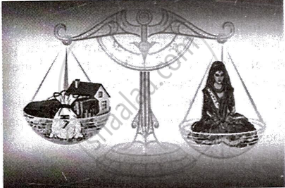Advertisements
Advertisements
प्रश्न
Patriarchal ideology undervalues attributes seen as “feminine” or pertaining to women and privileges traits that are “masculine” or relating to men.
Reflect on the above statement and with the help of any four arguments, outline the impact of such an ideology on different genders.
उत्तर
Impact of patriarchy on different genders:
On Women:
- It leads to practice and prevalence of social evils like female foeticide/Female infanticide/Child marriage/Sati/Dowry.
- It also legitimises subordination of women to men and leads to heinous crimes like rape, sexual harassment and domestic violence.
- It creates unequal opportunities for men and women which culminates in unequal pay norms at workplace.
- Women interiorise their inferior status and at times end up submitting to the will of the men. Many a times they remain unaware of their rights.
On Men:
- Men develop a superiority complex.
- They often feel pressured to conform to the normative roles of being ‘tough’ and the ‘provider’.
- It makes them ignorant of the challenges that women encounter.
- Patriarchal notion of rigid masculinity makes men violent in their behaviour towards women since they begin to view women as a secondary being.
APPEARS IN
संबंधित प्रश्न
Answer briefly the following questions :
What is meant by domestic violence?
Define gender bias. Examine its consequences for both, men and women.
Answer the following question briefly :
Differentiate between sex and gender.
Discuss any three gender-related issues. Briefly mention the bills and amendments to deal with them.
Answer the following question briefly:
Mention any two social reforms that led to the change in the status of women in Pre- British and British India.
What does gender bias imply? Mention any four consequences of gender bias.
Answer briefly the following question :
What is Fetishism?
______ was the practice of killing the unborn female child.
A historical Hindu practice which was initially voluntary for a widow led to the degradation in the status of women in India. Define this system which is now banned.
Read the passage given below and answer the questions that follow:
| Alka belonged to a traditional joint family. Her grandfather was the Head of the family and took all important decisions for all the members. As decided by her grandfather, Alka and her sisters were trained in the household work from an early age by the women in the family. They were made to develop their cooking skills. On the contrary, her brothers were encouraged to pursue academics and take up professions of their choice. |
- Name the ideology practised in Alka's family. [1]
- Briefly explain the impact of the ideology identified in subpart (i), on the inheritance rights of women and their status at workplace. [4]
- Identify and briefly explain the gender issue depicted in the image shown below. [2]

